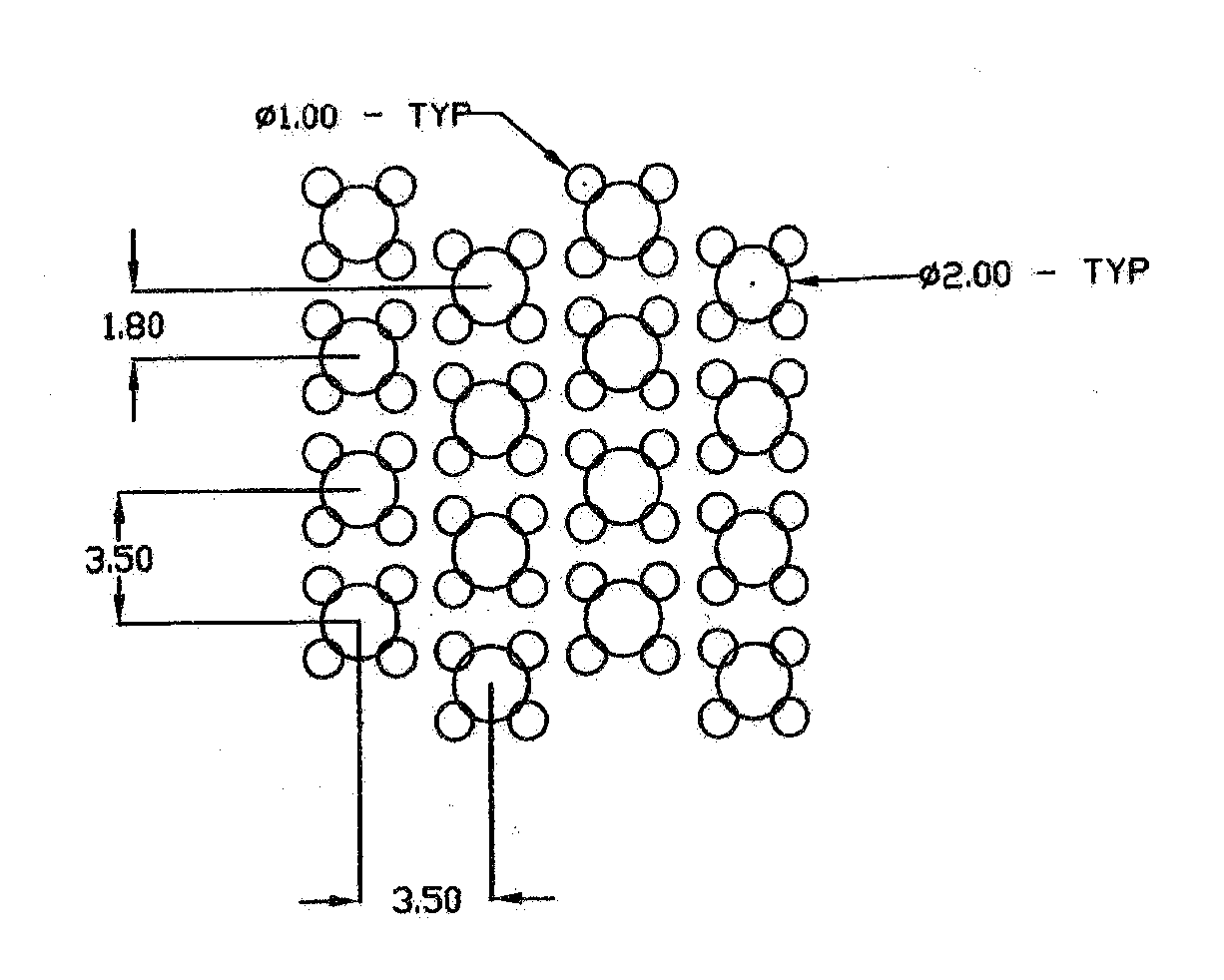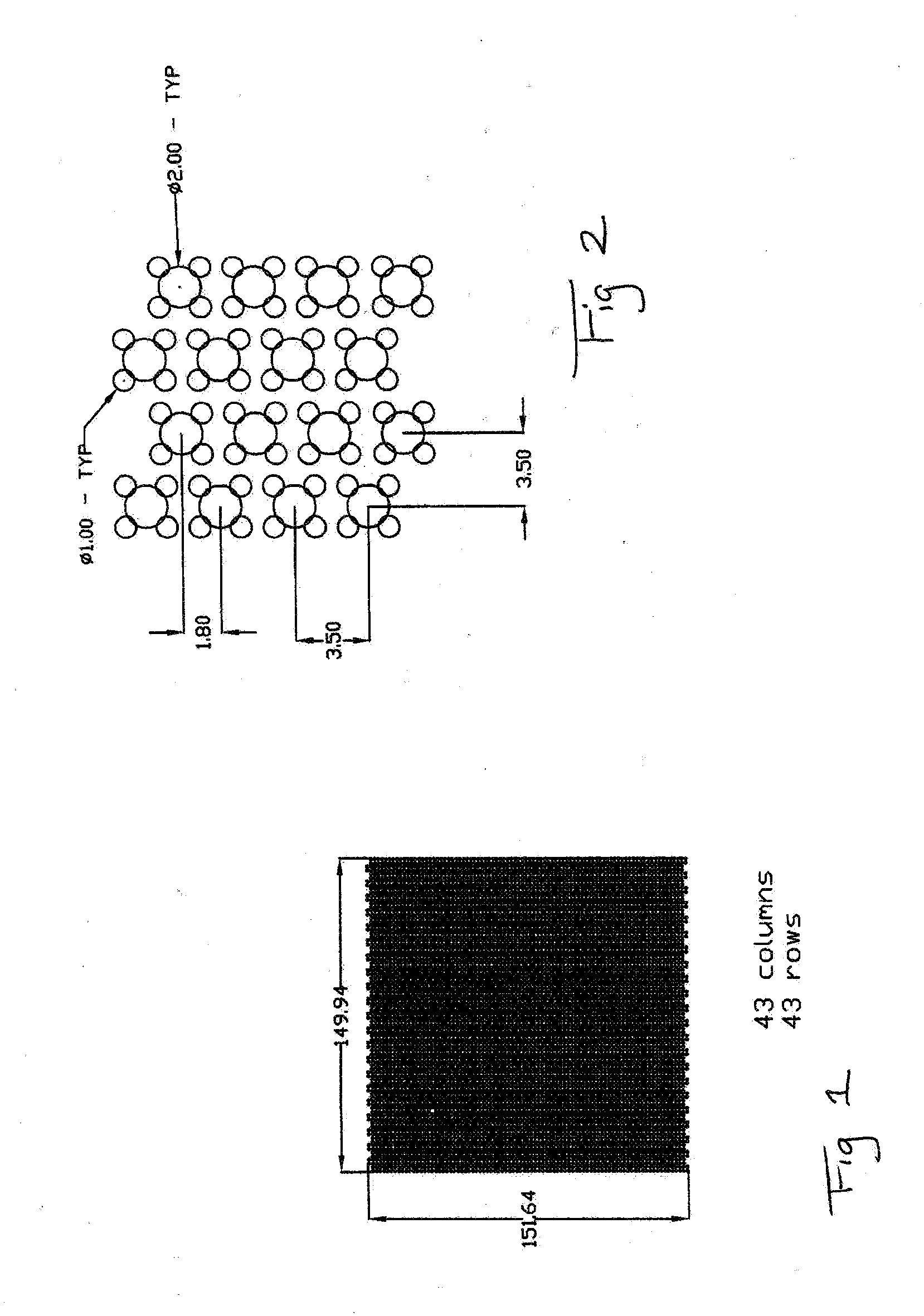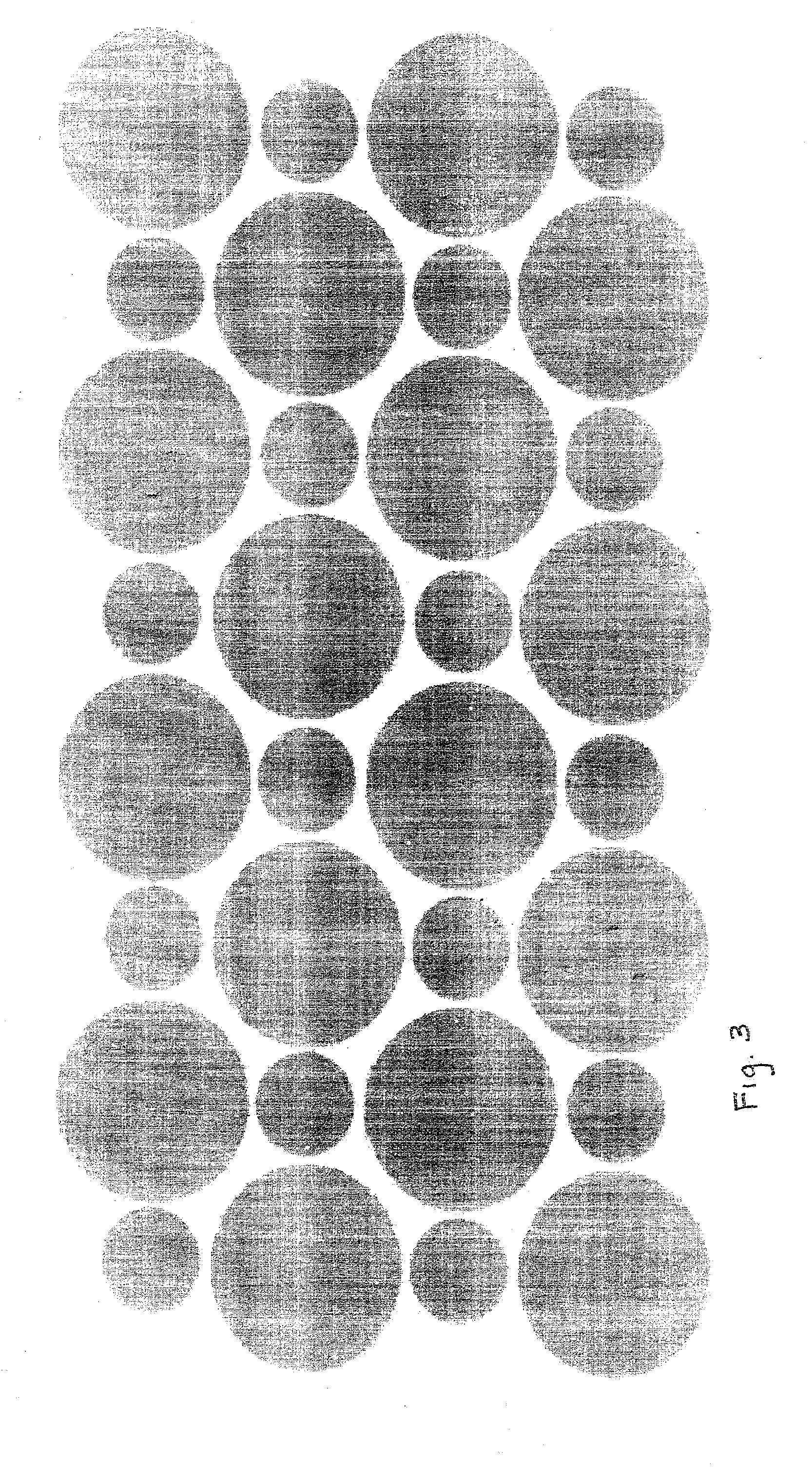Advanced Electrolytic Device--Bimetallic Wound Dressing
a bimetallic and electrolytic technology, applied in the field of applicative microorganism attack, can solve the problems of affecting wound healing, affecting patient mobility, and affecting wound healing, so as to achieve more current potential, improve wound healing, and improve healing
- Summary
- Abstract
- Description
- Claims
- Application Information
AI Technical Summary
Benefits of technology
Problems solved by technology
Method used
Image
Examples
Embodiment Construction
[0019]The present application is directed to a galvanic current wound dressing having antimicrobial properties and to a method for treating a patient with the wound dressing. The dressing comprises a pliable base material, and a pattern of deposited medical grade silver metal powder and medical grade zinc metal flakes in a pattern whereby the metals comprise at least two metals which, in close proximity but not touching, generate a galvanic current and which patterns of deposited metals are present in a repeating pattern. The deposited medical grade silver metal powder circles and medical grade zinc metal flakes are adhered to the pliable base material by a non-conductive water soluble carrier / binder. The carrier / binder (binding substance) binds the metals in suspension and is of a water soluble, solid formulation. This binder, as used, is non-conductive in function. As the binder reduces in mass, additional metallic materials contact the activation ingredient (saline) allowing for ...
PUM
| Property | Measurement | Unit |
|---|---|---|
| height | aaaaa | aaaaa |
| thicknesses | aaaaa | aaaaa |
| diameters | aaaaa | aaaaa |
Abstract
Description
Claims
Application Information
 Login to View More
Login to View More - R&D
- Intellectual Property
- Life Sciences
- Materials
- Tech Scout
- Unparalleled Data Quality
- Higher Quality Content
- 60% Fewer Hallucinations
Browse by: Latest US Patents, China's latest patents, Technical Efficacy Thesaurus, Application Domain, Technology Topic, Popular Technical Reports.
© 2025 PatSnap. All rights reserved.Legal|Privacy policy|Modern Slavery Act Transparency Statement|Sitemap|About US| Contact US: help@patsnap.com



